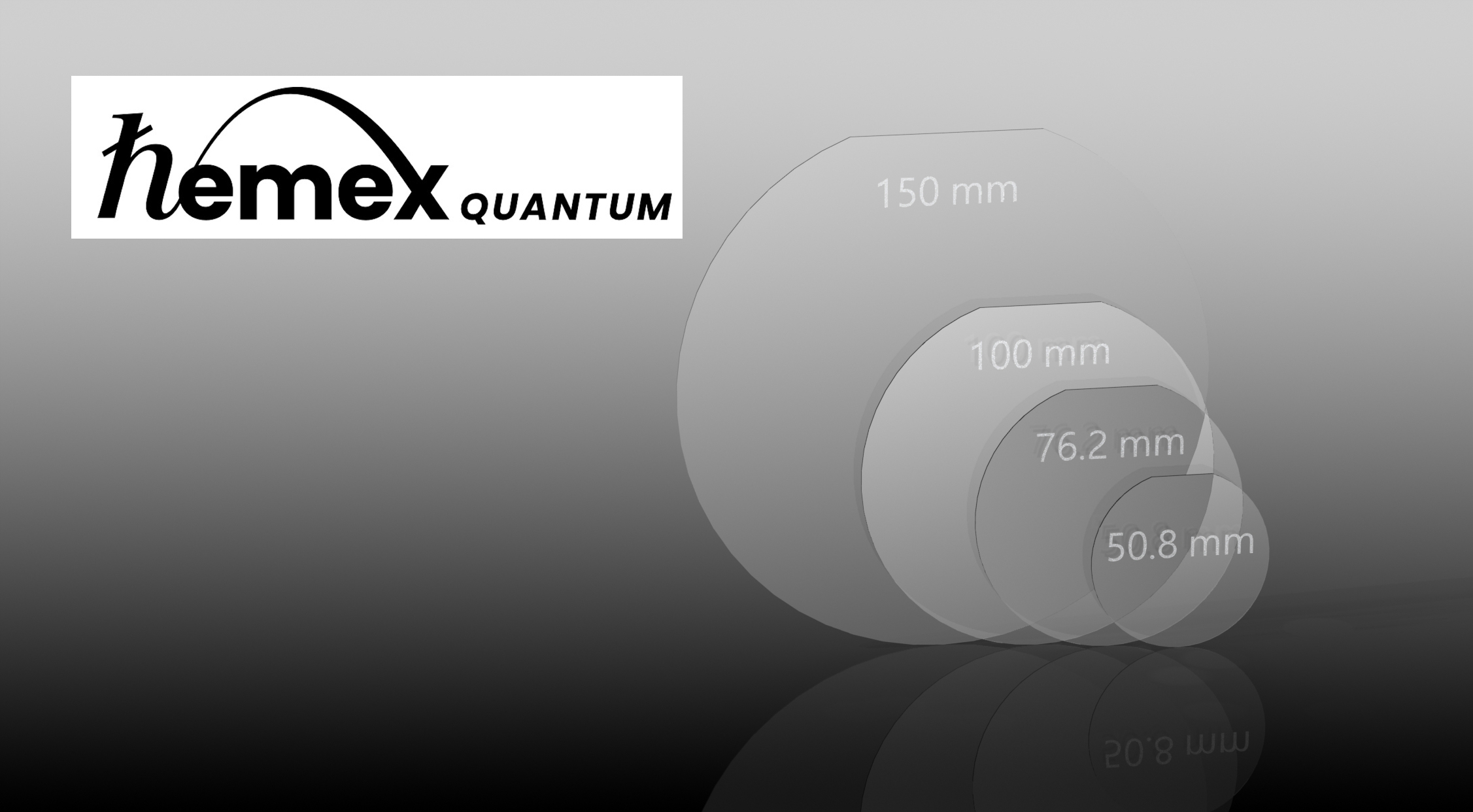Improved Performance of Superconducting Qubits Makes Investigation of Sapphire Substrates Compelling as an Alternative to Silicon

A white paper just released by Crystal Systems explores how the use of sapphire substrates could lead to significant improvements in the performance of superconducting qubits.
Superconducting qubits – which use superconducting circuits to maintain and manipulate quantum information – are considered one of the most viable and scalable quantum computing modalities. However, short T1/relaxation, T2/coherence, and lifetimes in superconducting qubits challenge the modality’s use in practical quantum computing applications. Basic materials choices in qubit construction can have a profound impact on these parameters. In particular, researchers at Fermilab, Yale and elsewhere have recognized that the choice of substrate is more critical than previously understood.
The paper, “HEMEX Sapphire as Substrate: Using Material Optimization for Improved Superconducting Qubits,” summarizes recent research that suggests the adoption of HEMEX® Sapphire, in place of silicon, can enhance the stability and functionality of the transmon qubits type used in the exploration.
The white paper details preliminary findings made by the Yale Quantum Institute, how HEMEX Sapphire has been associated with extended relaxation (T1) and coherence (T2) times, and clear results of improved quantum memory, essential for the operation and scalability of quantum computers.
The study by the Yale researchers compared various sapphire substrates and identified the Heat Exchanger Method (HEM) annealed sapphire, particularly the ℏemex quantum sapphire from Crystal Systems, as producing superior results. This is credited to the material’s effectiveness in reducing losses from surface materials and bulk dielectrics, which are major contributing factors to qubit decoherence. The Yale researchers demonstrated that the use of Crystal System’s HEMEX Sapphire over other types, such as EFG annealed sapphire, achieved Ramsey times ranging from 2.0−2.7 milliseconds, relaxation times between 1.0−1.4 milliseconds, and coherence times around 0.15 – 0.3 milliseconds.
quantum sapphire from Crystal Systems, as producing superior results. This is credited to the material’s effectiveness in reducing losses from surface materials and bulk dielectrics, which are major contributing factors to qubit decoherence. The Yale researchers demonstrated that the use of Crystal System’s HEMEX Sapphire over other types, such as EFG annealed sapphire, achieved Ramsey times ranging from 2.0−2.7 milliseconds, relaxation times between 1.0−1.4 milliseconds, and coherence times around 0.15 – 0.3 milliseconds.
Crystal Systems’ white paper emphasizes the potential of ℏemex quantum sapphire as a pivotal substrate that could address some of the persistent challenges in quantum computing, such as decoherence and the short lifespan of qubits’ quantum states. It argues that this could pave the way for more robust, reliable and scalable quantum computers.
The white paper also serves as a call for further exploration and collaboration between academia and industry, highlighting the necessity to investigate the benefits of ℏemex quantum sapphire substrates as documented in the Yale Quantum Institute’s research.
This publication from Crystal Systems adds a new perspective to the conversation on quantum computing materials, offering insights into how superconducting qubits can be optimized for the next generation of quantum technology.
To review the white paper, click the banner below.

